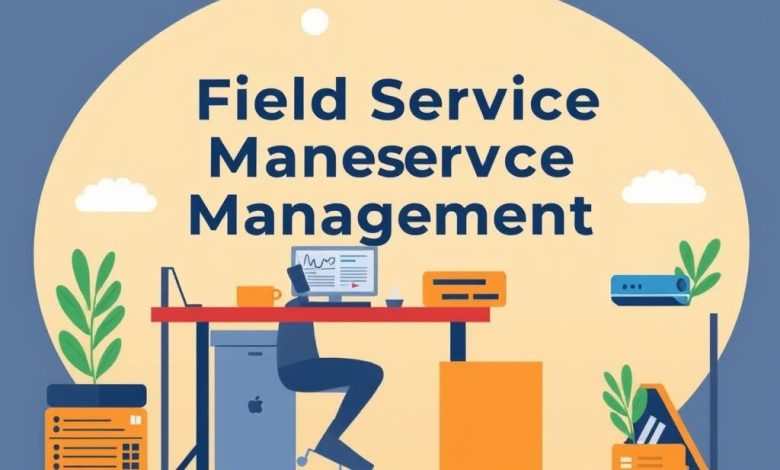Field Service Management with Cost-Per-Visit Optimization

Introduction
Field Service Management (FSM) is a critical component of many businesses, particularly in industries such as HVAC, electrical work, plumbing, and home maintenance. As companies strive to provide efficient and cost-effective services, optimizing field service operations has become increasingly important. One key area of focus is Cost-Per-Visit Optimization, which aims to reduce expenses while maintaining high-quality service delivery.
The Importance of Field Service Management
Field Service Management encompasses various aspects of service delivery, including scheduling, dispatching, resource allocation, and customer communication. Effective FSM ensures that technicians are deployed efficiently, reducing travel time and improving response times. This not only enhances customer satisfaction but also contributes to overall business efficiency and profitability.
Challenges in Traditional Field Service Management
Traditional FSM often faces several challenges:
- Inefficient scheduling leading to unnecessary overtime
- Underutilization of resources due to poor allocation
- High fuel costs resulting from inefficient routing
- Difficulty in predicting and preparing for future demand
- Manual data entry and lack of real-time visibility
These challenges can significantly impact a company’s bottom line and its ability to deliver quality service.
Cost-Per-Visit Optimization
Cost-Per-Visit Optimization is a strategic approach aimed at minimizing expenses associated with each service visit while maintaining or improving service quality. This optimization involves analyzing various factors that contribute to the total cost of each visit.
Key Components of Cost-Per-Visit Optimization
- Route Optimization: Utilizing advanced algorithms to create the most efficient routes for technicians, reducing travel time and fuel consumption.
- Resource Allocation: Ensuring optimal utilization of available resources, including technicians, vehicles, and equipment.
- Predictive Maintenance: Implementing proactive maintenance strategies to minimize unexpected breakdowns and reduce emergency visits.
- Customer Communication: Improving communication channels to manage expectations and reduce repeat visits.
- Data Analysis: Leveraging insights from historical data and real-time metrics to make informed decisions.
Implementing Cost-Per-Visit Optimization
To implement effective Cost-Per-Visit Optimization, organizations should consider the following steps:
- Invest in FSM software: Adopting specialized FSM platforms that offer advanced features such as route optimization and predictive maintenance.
- Utilize real-time data: Implement systems that provide real-time updates on technician locations, job status, and customer interactions.
- Develop standardized processes: Create clear procedures for scheduling, dispatching, and completing jobs to ensure consistency across all visits.
- Conduct regular analysis: Regularly review performance metrics and adjust strategies accordingly.
- Train staff: Educate technicians and support staff on the importance of efficient practices and how to contribute to optimization efforts.
Benefits of Cost-Per-Visit Optimization
Implementing Cost-Per-Visit Optimization can yield numerous benefits for field service organizations:
- Reduced operational costs: Lower fuel consumption, reduced overtime, and optimized resource utilization.
- Improved customer satisfaction: Faster response times, more accurate scheduling, and better communication.
- Increased efficiency: Streamlined processes and automated tasks reduce administrative burden.
- Enhanced decision-making: Access to real-time data enables informed strategic decisions.
- Competitive advantage: Organizations that optimize their operations stand out in the market with improved service quality and cost-effectiveness.
Case Study: XYZ Plumbing Services
XYZ Plumbing Services, a medium-sized plumbing company serving a metropolitan area, implemented a comprehensive FSM solution with Cost-Per-Visit Optimization features. The results were impressive:
- Route optimization reduced travel time by 15% within the first month.
- Resource allocation improved, resulting in a 20% increase in job completion rate.
- Predictive maintenance identified potential issues before they occurred, reducing emergency visits by 12%.
- Customer communication was enhanced through automated notifications, leading to a 25% reduction in repeat visits due to misunderstandings.
- Data analysis revealed seasonal patterns in demand, allowing for more effective staffing during peak periods.
These improvements resulted in a 10% overall reduction in cost-per-visit while maintaining high customer satisfaction scores.
Conclusion
Field Service Management with Cost-Per-Visit Optimization is a powerful strategy for businesses looking to improve their operational efficiency and reduce costs. By implementing advanced technologies, standardized processes, and data-driven decision making, companies can significantly enhance their ability to deliver quality services while minimizing expenses.
As the field service industry continues to evolve, those who embrace these optimization techniques will be well-positioned to thrive in an increasingly competitive landscape. Whether you’re a seasoned field service manager or just starting your journey towards optimization, the principles outlined in this article provide a solid foundation for improving your operations and achieving long-term success in the field service sector.




